API for Trucking: What Is It and How Is It Used in Logistics Software Development
Updated 23 Jun 2023
15 Min
1296 Views
Cargo transportation with complex routes, different stops, and various modes of transport is a big headache for logistics and trading companies. Such organizing takes a lot of time and isn't protected against errors. However, this issue can be solved by software control systems that greatly facilitate the construction and optimization of routes.
Special trucking Application Programming Interfaces (APIs) make software better, more flexible, and more convenient. Reading this article, you can learn about API trucking advantages and peculiarities of its application.
Why Are Software Tools Needed in Trucking?
Cargo transportation is one of the most complex processes in logistics. Its manual organization is quite complicated since many factors must be taken into account, such as:
- Number of stops
- Number of vehicles on the route
- Delivery priority
- Choosing the best route
- Weather conditions
- Dimensions of transported goods
- Speed limits
In addition, there may arise situations when you have to make urgent changes throughout the day. For example, change the priority of deliveries or add a new stop. Also, do not forget that in recent years traffic has significantly increased, so sometimes it is critical to rebuild the route to deliver the goods on time.
Routing software solutions come to the rescue in this matter. They often include separate applications for dispatchers and drivers, allowing them to interact quickly. So, all points added to the route by the dispatcher are immediately displayed to the driver. The software independently creates the most optimal path so that all cargo is delivered on time with minimal time and fuel costs. Drivers do not have to spend extra time laying a route, and this is significantly increasing their efficiency.
Let's take a look at some statistics on the impact of routing software on logistics companies:
- Fuel costs are reduced by approximately 16% with proper routing, and it helps to increase the company's operating profit
- Stop prioritization reduces fuel consumption by another 2.3%, which also implies the profit growth
- The growth of the apps routing market is currently about 11.4% per year, which indicates the interest in this software and the relevance of its optimization via APIs
Benefits of digitalization in logistics industry
It is worth explaining the main benefits that logistic companies receive from trucking app development:
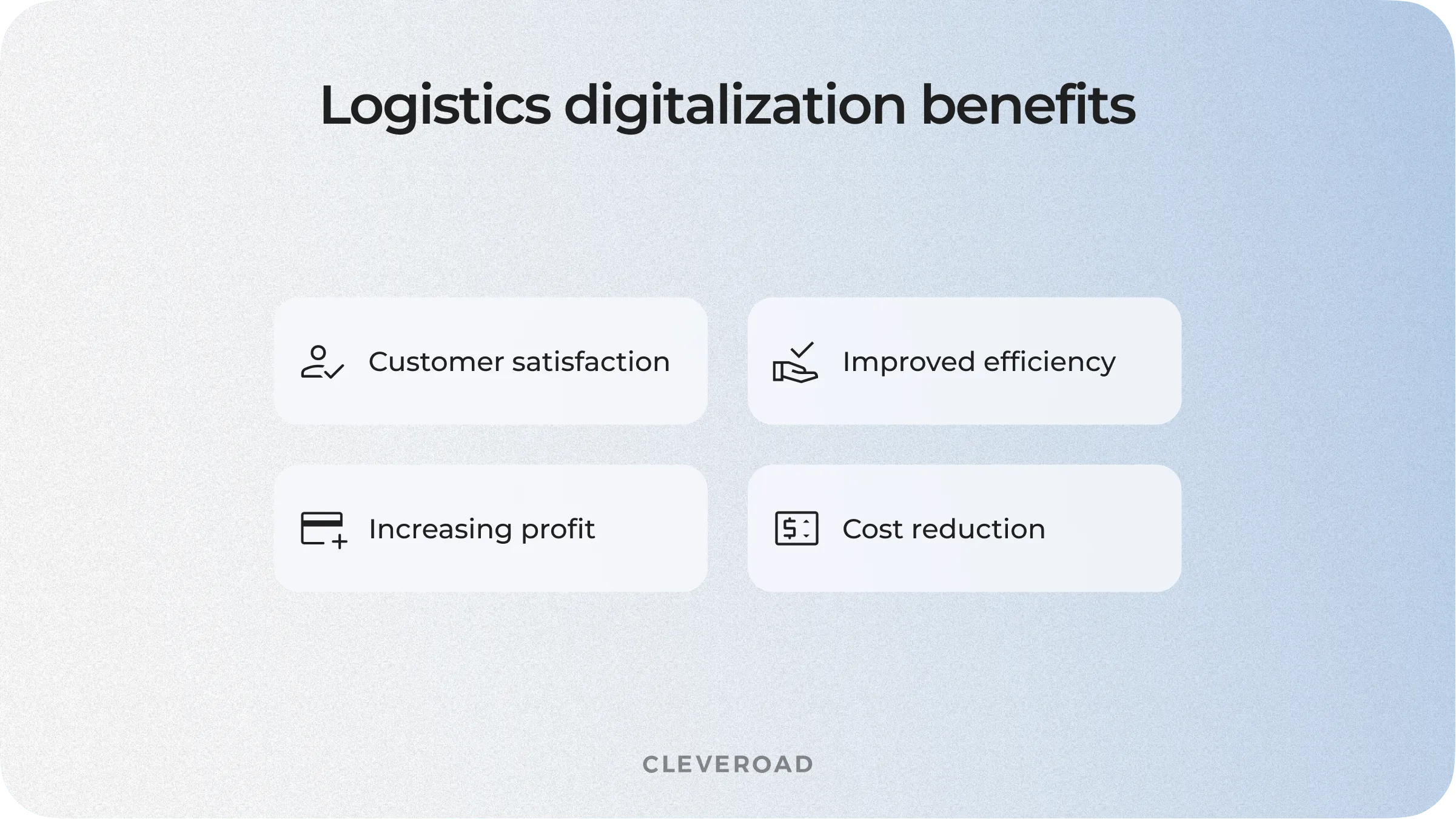
How can you profit from digitizing logistics
Improved efficiency. Route optimization reduces the overall time spent on delivering goods, enabling you to make more daily deliveries, and increasing the efficiency of each driver and the company.
Customer satisfaction. Routing complies with the existing delivery window for each order, which guarantees the receipt of the goods at a particular time, which increases the satisfaction of cooperation.
Cost reduction. The choice of optimal routes can significantly reduce the cost of fuel and depreciation. Also, the boost in efficiency leads to an increase in the number of completed tasks without additional costs.
Increasing profit. The result of optimization cost reduction and increase in productivity will be an increase in company profits, which can be considered the primary target advantage of routing software.
Let's move on to how trucking APIs achieve these goals.
Trucking API: What Is It and How Does It Work?
Application Programming Interface is software that allows different apps to interact with each other and share data. Thus, the API receives a request from one application, calls the server to obtain all the necessary data, and returns it to the supplicant. At their core, APIs are intermediaries between programs and servers involved in the supply chain.
At the same time, differences in programming languages do not affect the quality and speed of interaction. API trucking can be integrated both at the development stage and into an already created third-party TMS, as they are a cloud solution connected via the Internet.
Logistics service providers use the trucking API to create truck routing software that considers unique requirements by matching vehicle characteristics with route restrictions and traffic conditions, allowing real-time route creation and re-routing. Also, API trucking helps all the company's software work as a whole and will enable you to manage the entire supply chain effectively.
API trucking is commonly used in logistics today because it provides higher accuracy, speed, and efficiency for CRMs or Transporting Managing Systems (TMSs). Let's consider what tasks trucking APIs perform in logistics software:
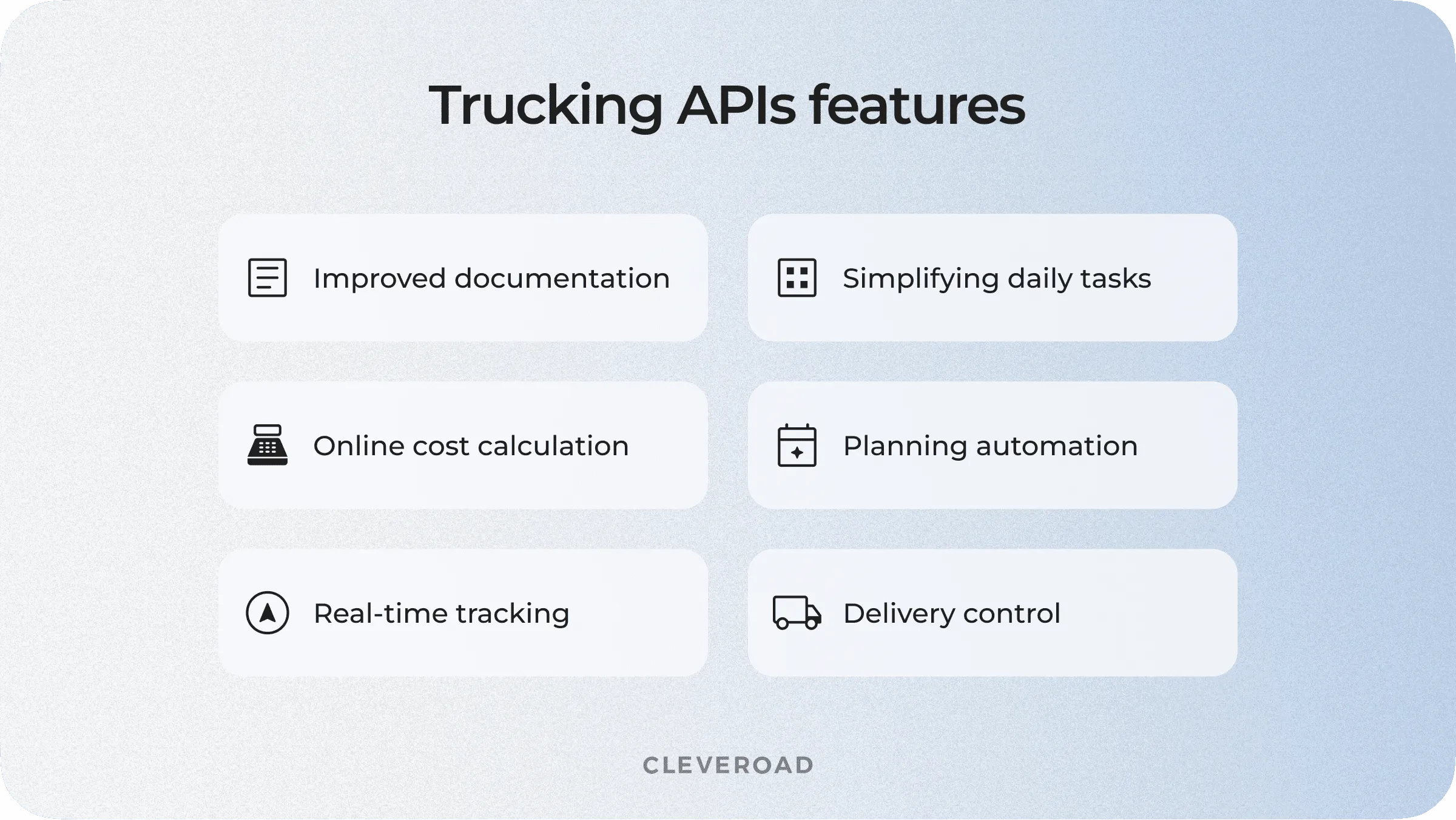
Some trucking APIs features
Real-time cost calculation. API trucking can send a request to calculate the price or transit time to several operators at once and return the results to the requesting application. Thus, you can always avoid unnecessary expenses by choosing the best options.
Real-time tracking. With the help of API, it is easy to control the location of all goods and their movement, which is often critical in the supply chain. In the case of urgent delivery tasks, you can easily see which driver can complete them at the lowest cost.
Delivery control. APIs can send a delivery request and, after it is completed, confirm receipt of the goods. Therefore, you can always be sure that the goods are delivered on time, as well as notify customers about this if necessary.
Quick document searching. API trucking also dramatically simplifies access to the necessary documents. So, using the carrier's tracking number, you can quickly get all the documents along the route.
Planning automation. The high speed of receiving a response from the server helps to significantly speed up the delivery process and better plan routes, controlling the location and quickly making adjustments if necessary. Includes the search for the best ways, considering traffic, weather, and possible repairs on the road.
Simplifying daily logistics tasks. The API includes options such as automatic invoicing, updating employee and transportation data, inventory control, and more. Thus, it is possible to avoid errors that the manual execution of these tasks could provoke.
Trucking APIs have been massively replacing Electronic Data Interchange (EDI) integrations in transporting management in recent years. Questions like "What is a shipping API?" or "What is a trucking API?" have become more popular. An increasing number of companies are integrating APIs into their TMS, which allows them to expand the software's functionality. In addition to the smooth operation of the supply chain, automatic route planning, and data exchange with employees, companies also get the acceleration of all processes, simplified access to data, and improved interaction with other participants in the logistics process.
How Do APIs Simplify Trucking and Cargo Transportation?
Let's consider the benefits you will get from using API trucking in your business.
Access to real-time data. It is critical to avoid delays in logistics processes, and APIs immediately allow access to all data. This is a huge advantage for companies using this solution in their operations, as it provides increased speed of deliveries and decision-making.
Cloud technology. The fact that trucking APIs are cloud-based makes it easy to update and maintain them just by connecting to the Internet, so you don't need to stop all processes.It also makes it much easier to integrate APIs into all operations.
Reducing the number of errors. API trucking allows you to take a massive step toward automating all transport processes. This avoids many mistakes that could be made by dispatchers or drivers at all stages of planning and performing.
Availability. API technology is present in many ready-made solutions and easily implemented in custom software development. This technology is widely used and allows programs to exchange information efficiently.
Fast development. Trucking APIs are developing quite actively, which gives great prospects for their further development. Thus, by integrating APIs now, you will be able to update them in the future, further increasing the output of your business.
Simplification of logistics. The manual execution of complex and time-consuming tasks took a lot of effort and time, with API trucking becoming as automated as possible and not requiring detailed work of employees. This allows you to increase their efficiency significantly.
Increasing profitability. API trucking allows you to reduce costs, such as fuel, time, etc. Simultaneously, increasing the efficiency of each employee in particular and the company as a whole can significantly increase profits.
Thus, implementing trucking APIs has vast benefits and significantly increases business profitability. However, even such valuable technology has its disadvantages.
Trucking APIs' drawbacks
When implementing trucking APIs, it should be remembered that they have certain peculiarities that are important to consider:
Implementation cost
Sometimes, the cost of implementing and maintaining APIs can be high. To avoid such complexity, you should choose a company that will implement the API in your software or consider creating a custom TMS that will meet all your requirements. Again, it is worth paying attention to offshore software providers, where you can find an experienced team of specialists at an affordable price.
Difficulties in executing
In implementing API trucking in logistics processes, extensive knowledge in the field of programming is required. It can also be challenging to train employees in new software. To avoid these difficulties, you should turn to an experienced IT advisor who will offer a solution with a well-thought-out UX and help you with system deployment and operator training during the implementation phase.
Security threat
Since APIs can be another target for various hacker attacks, it is worth paying more attention to the software's security. Preferably, ensure that your developers have provided maximum protection for your technical solution.
As you can see, the disadvantages of trucking APIs are easily overcome with the help of an experienced software service provider, and the benefits are awe-inspiring. Now, it is worth considering examples of the use of APIs in ready-made solutions to illustrate the practice of their usage.
Discover important EU directives for business and how they influence security
How Do Trucking APIs Work in Off-The-Shelf Solutions?
Modern businesses are increasingly digitized and trying to automate more and more tasks. For instance, transport managing software is used by an increasing number of logistics companies today. Regarding this, many technological solutions have been created using API trucking. Let's overview some of the more commonly used examples.
Axon Tracking Software
One of the top applications on the market provides a fully integrated system for cargo transportation. All the necessary information is instantly transmitted in real-time thanks to API trucking. The solution can significantly reduce the cost and stress of doing business, increase driver satisfaction and reduce the number of management staff. The developers themselves say that the software will triple the fleet's efficiency. Axon provides the following features:
- Full fleet management
- Accounting
- Reports
Netradyne
The developer provides a unique Driverᐧi system, a video camera system capable of capturing the entire driver's path in 360°. Equipped with special software, including trucking APIs, it allows you to improve the routes in your fleet significantly. Artificial intelligence provides drivers with real-time courses and driving recommendations.
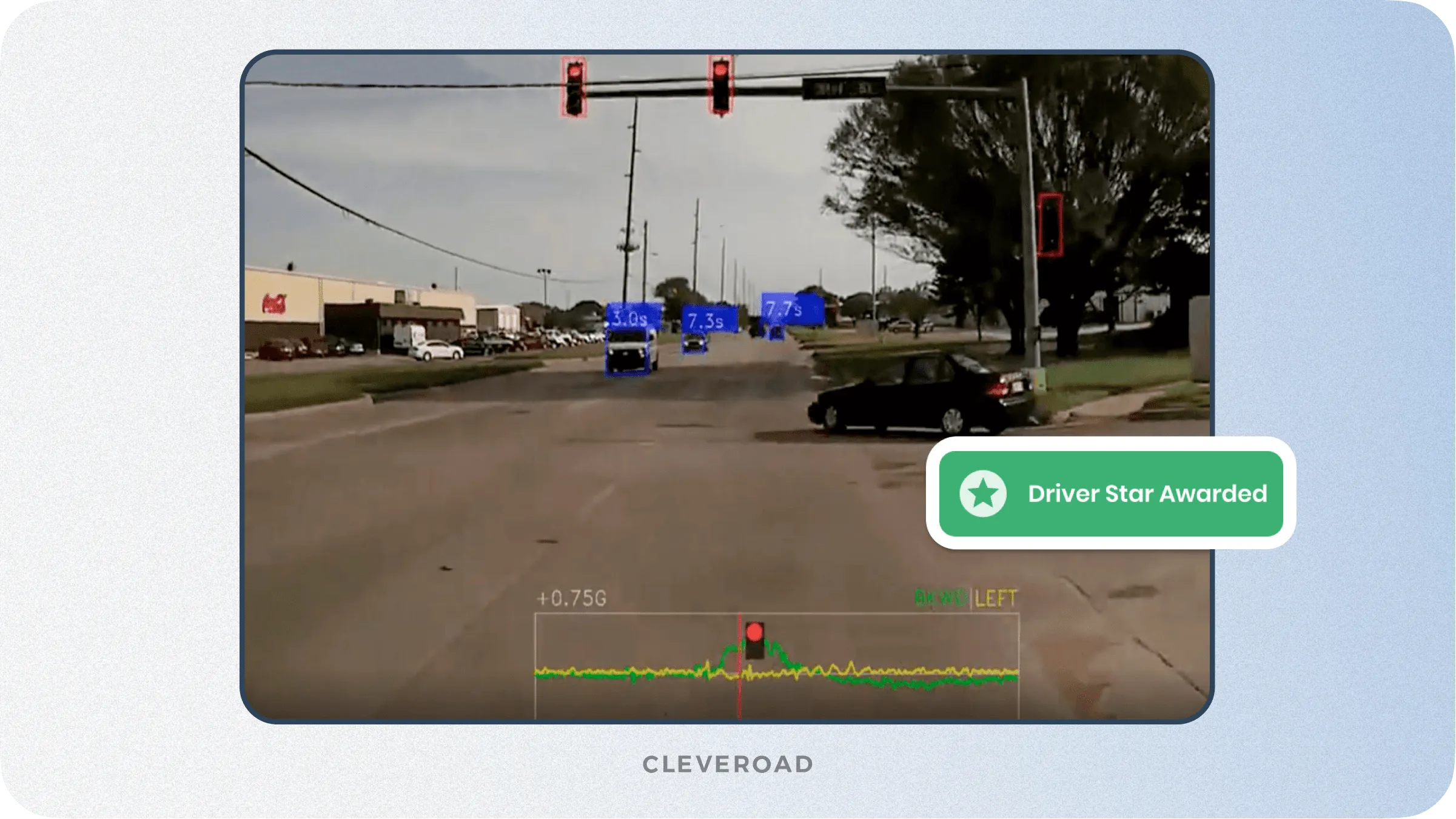
Driver-i
Also, each driver is tracked using GPS and instantly transmitted to dispatchers thanks to the trucking API. This software can significantly increase efficiency and reduce risks, increasing driver satisfaction, and lower insurance payments.
Envase Intermodal TMS
This software solution helps to optimize all business processes. Using API trucking makes it possible to track loads, drivers, and road conditions, rebuild routes and make decisions based on the data received. You can also receive instant reports in one click. Envase TMS features include:
- Automatic order entry
- Send optimization
- Container Tracking
- Electronic Data Interchange (EDI)
Samsara
Samsara is a multifunctional fleet management platform. Using the trucking API significantly improves transportation efficiency, as data on the routes and locations of each vehicle is always available in real time.
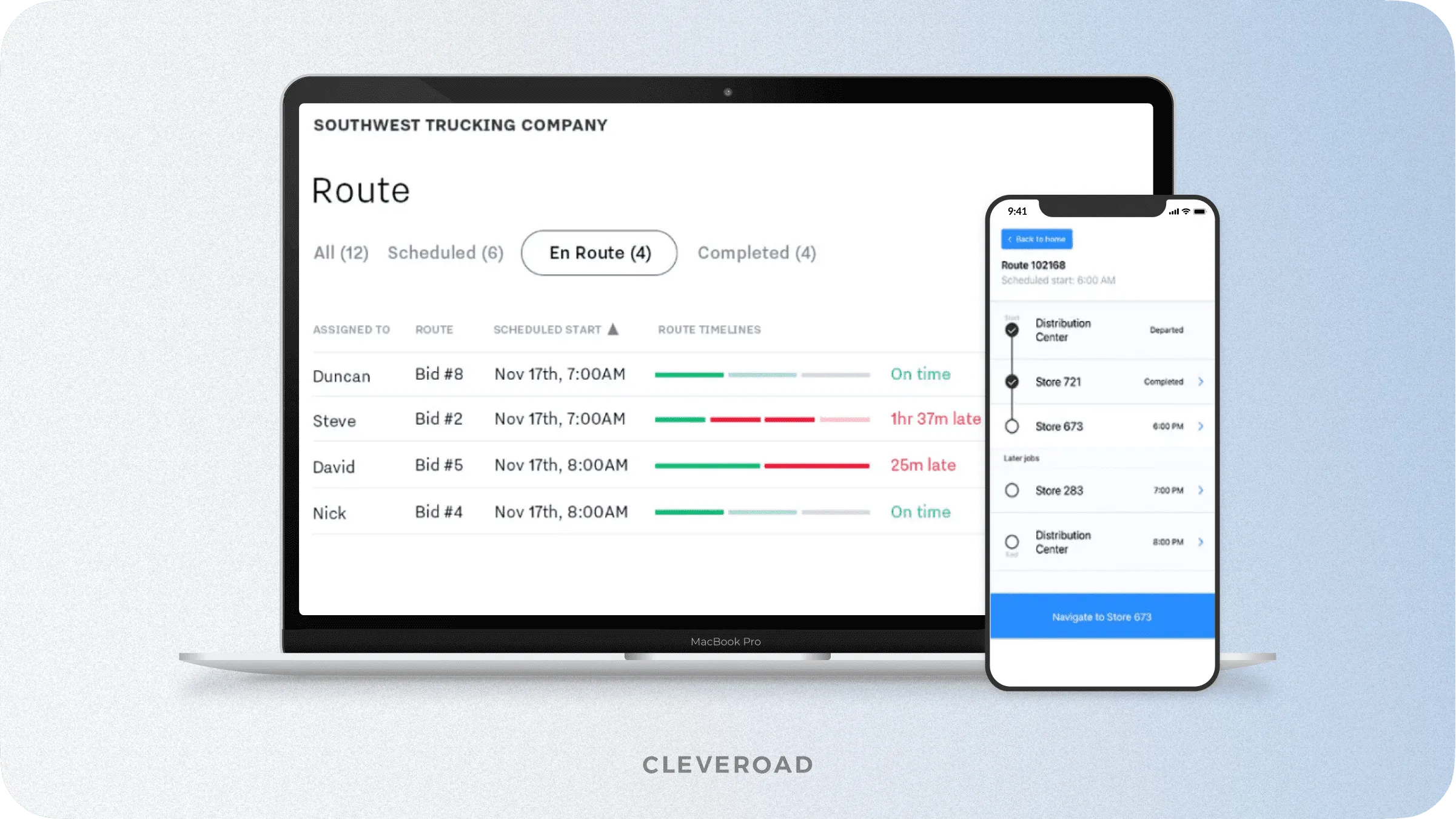
Samsara interface
Also, the real-time exchange of data allows you to make the necessary changes to ways quickly. In addition, the software can be synchronized with specialized equipment that will, for example, monitor the engine's condition, the temperature in the container, and so on.
Tailwind TMS
Another example of a generic fleet management app using the trucking API. Tailwind helps small and medium-sized companies compete with logistics giants. Thanks to the use of the API, all operations are carried out quickly and easily, even if employees work from different locations. Thus, transportation management is automated as much as possible, costs can be reduced, and the efficiency of each employee increases significantly.
It can be concluded that the trucking API in such software significantly improves its user experience. So, all requests are executed in real-time and the speed of information processing and decision-making increases. However, it is crucial to remember that technical solutions, such as TMS, must be fully tailored to your business processes. Therefore, it is worth considering the possibility of creating your software with API trucking integration.
What Should Be Considered When Implementing an API?
So, you have decided that you need to implement the trucking API. Let's take a closer look at where to start and how the implementation process will occur.
Step 1: Decide on an idea First, you need to determine for what purposes you need to implement API trucking. This can be the optimization of the entire transportation process or operations like route planning, delivery tracking, data transfer acceleration, etc. Next, an API will be created or implemented based on your goals to help you achieve them.
Step 2: Find a technical partner Implementing a trucking API will require collaboration with an experienced software service provider. Today, there are many companies that can help to solve this task. Therefore, you should find your technical partner based on their experience in creating such solutions. A professional vendor will help you understand all your wishes, even if you do not shaped your idea. It will be enough to state it in general, and, together with technical experts, you’ll create a clear plan and technical requirements for the future project. In this case, it is advisable to cooperate with offshore software vendors. They can offer you an experienced, proven team with high expertise in your industry for a reasonable price.
Discover offshore software development rates in our article
Step 3: Discuss the idea with a technical expert Once you've decided on your technical partner, share your goals and expectations for implementing API trucking with a software vendor. He will help clarify all the details and provide you with a project roadmap. It will give you a clear understanding of all development stages, deadlines, and results.
Step 4: Implementing the trucking API The final stage is to implement the API in your logistics system. However, if you want a software solution that will fully optimize all processes and meet all your expectations, we recommend you create a custom solution with an API on request. This way, you can be sure that all your goals will be achieved. Also, you will be able to improve the software on demand.
How is software with API integrations developed?
Software with integrated trucking API is built according to a particular algorithm. Let's consider the whole process in detail:
- Discovery phase. First, after an introductory acquaintance with the project and the beginning of cooperation, the discovery stage necessarily passes. During this phase, we determine the project’s details and all basic requirements. Then, the team determines the delivery timeline and estimates the development cost. Based on the results of this step, a set of documents is compiled for the following stages, including a design concept, UX map, Feature Breakdown List (FBL), etc.
- UI/UX design. Next, UI/UX designers, in cooperation with the developers' team, create the future application screen by screen. Any software requires close attention to this point. In particular, solutions with API trucking should provide convenient and understandable access to the whole set of functions provided by such integration.
- Development. As soon as all the requirements and designs are ready, the development team starts creating software with the trucking API. Development takes place in several sprints, during each of which specific goals and intermediate results are achieved.
- Quality assurance. Development is necessarily accompanied by testing. For example, regarding API trucking integration, it is imperative to be sure that everything works correctly and that all tasks are performed as needed. That is why quality assurance specialists always conduct testing at all stages of development and upon project completion.
- Release. You can launch the application and implement it into your logistics processes when it is ready. You may need the help of your software provider to transfer all data, synchronize all software, and train employees. We at Cleverode are happy to assist our clients at this stage.
- Maintenance. Finally, technologies such as the trucking API are fast developing today, so after your software is launched, you can continue cooperating with developers for further technical support and stable application updates.
Creating software with trucking APIs may seem complicated and time-consuming. Still, with the help of an experienced software provider, you can quickly and effortlessly get the best solution to optimize your business.
Software Services to Improve Your Transportation and Logistics
Logistics APIs is a rather complicated topic, so successful implementation of API trucking requires an experienced technical partner with deep expertise in software solutions and logistics. And Cleveroad is just such a company.
We have been successfully operating in the software services market for over 10 years, having completed more than 170 projects. Logistics occupies a special place in our industry expertise. We provide businesses with a wide range of services to optimize supply chains, reduce costs, increase efficiency and increase profits.
Clients of Cleveroad receive full cooperation coverage: from initial consultations, continuing with the creation of a unique technical solution on request, and ending with post-release project support. You can get acquainted with the clients’ impressions from the partnership on the Clutch platform.
Among our services are:
- The development of custom software solutions
- The reengineering of existing software and legacy systems
- The integration of tech tools like APIs and EDIs, including trucking APIs
Cleveroad's portfolio includes many software solutions for automating logistics processes, such as Warehouse Management Systems (WMS), Asset Management Systems, Transportation Management Systems (TMS), or Enterprise Resource Planning (ERP).
Consider one of the latest examples of logistics software development — TMS for a US-located company whose main activity is dropshipping. The client needed to automate route planning, as transportation occupied a large part of their workflow.
Among the tasks assigned to the Cleveroad team was creating a transportation management system that would help significantly increase the efficiency of each truck and fleet. This includes fully automating the process of building a route that will be synchronized with the company's existing software, such as CRM and WMS.
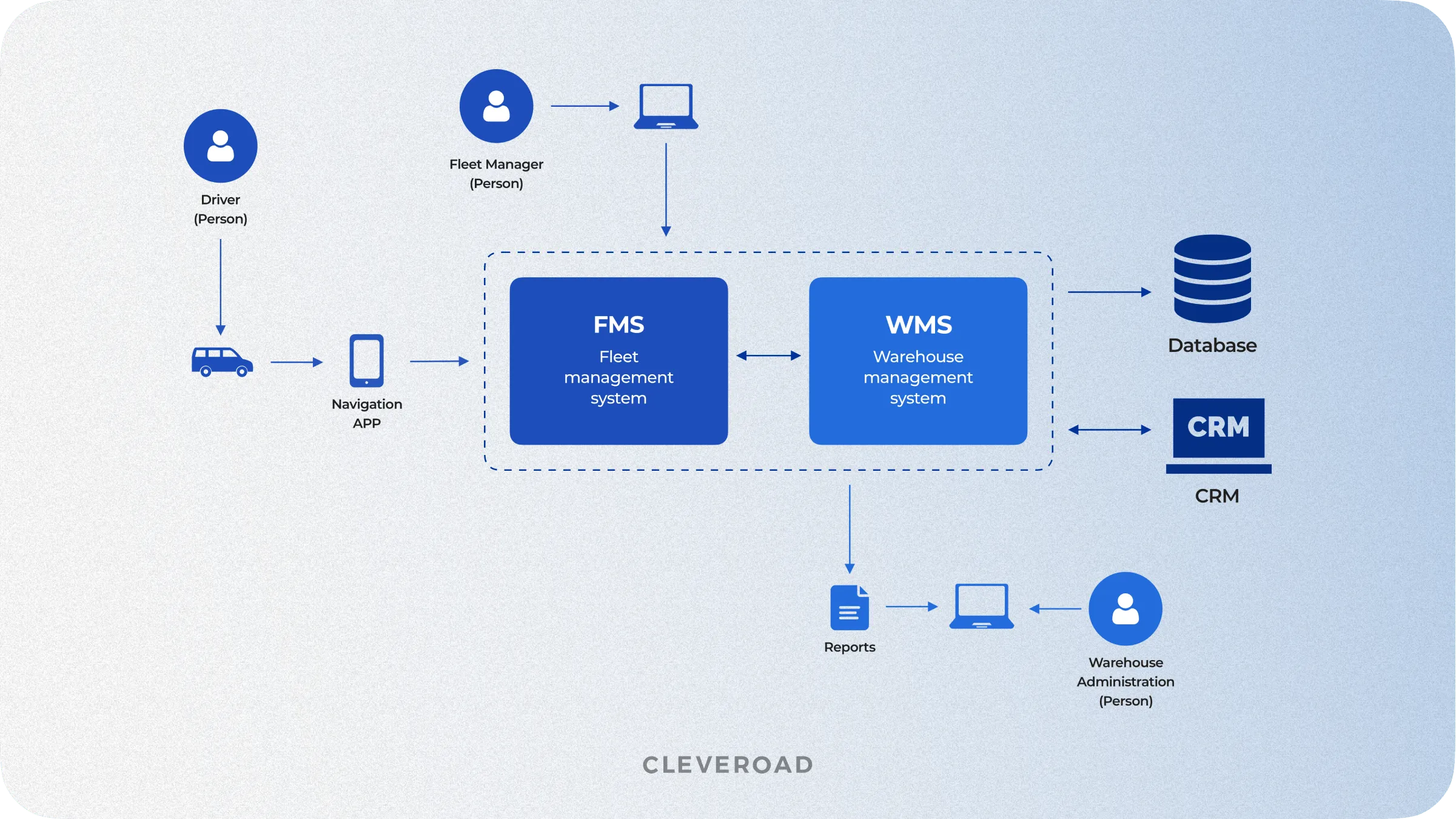
TMS in logistic processes
The following technical stack was used during the development: Kotlin for the Android, Swift for the iOS application, and Java for the backend.
We have fully satisfied the client's needs by creating a custom TMS for them that fulfills all requirements. Thus, route planning with the possibility of manual configuration and synchronization with databases was completed so that all project goals were achieved.
As a result of cooperation with Cleveroad and the creation of a custom TM, the client achieved the following outcomes:
- Optimization and acceleration of all transport processes
- Growth in return from each truck
- Reduced time and cost for route planning and control
- Increase the speed and efficiency of logistics operations
- A holistic software system that automates most tasks
- Improving efficiency and, as a result, increasing profits
To raise your company to the next level, reduce costs and risks, and increase profits, consider developing custom software integrating trucking APIs or implementing them into the one you use. Cleveroad will help you solve both of these tasks.
Build software with trucking APIs
Cleveroad team will design and develop a solution that meets all your requirements
API is an acronym that stands for Application Programming Interface. It is software that allows different apps to interact with each other and share data. At their core, APIs are intermediaries between programs and servers involved in the supply chain.
For transport companies, API is a common component of logistics software, such as TMS and CRM, which allows you to increase the speed of operations, improve the interaction between business chain programs, optimize routes, simplify work with documentation, and much more.
There are special trucking APIs that allow vehicle drivers to instantly get the best route for the next task. They take into account many special factors, such as truck size, weather conditions, traffic jams, etc.
To implement a trucking API, you should contact a software vendor that has extensive experience in creating logistics and transportation solutions. They will help you integrate the API into your business processes or create custom software for you with API trucking.

Evgeniy Altynpara is a CTO and member of the Forbes Councils’ community of tech professionals. He is an expert in software development and technological entrepreneurship and has 10+years of experience in digital transformation consulting in Healthcare, FinTech, Supply Chain and Logistics
Give us your impressions about this article
Give us your impressions about this article